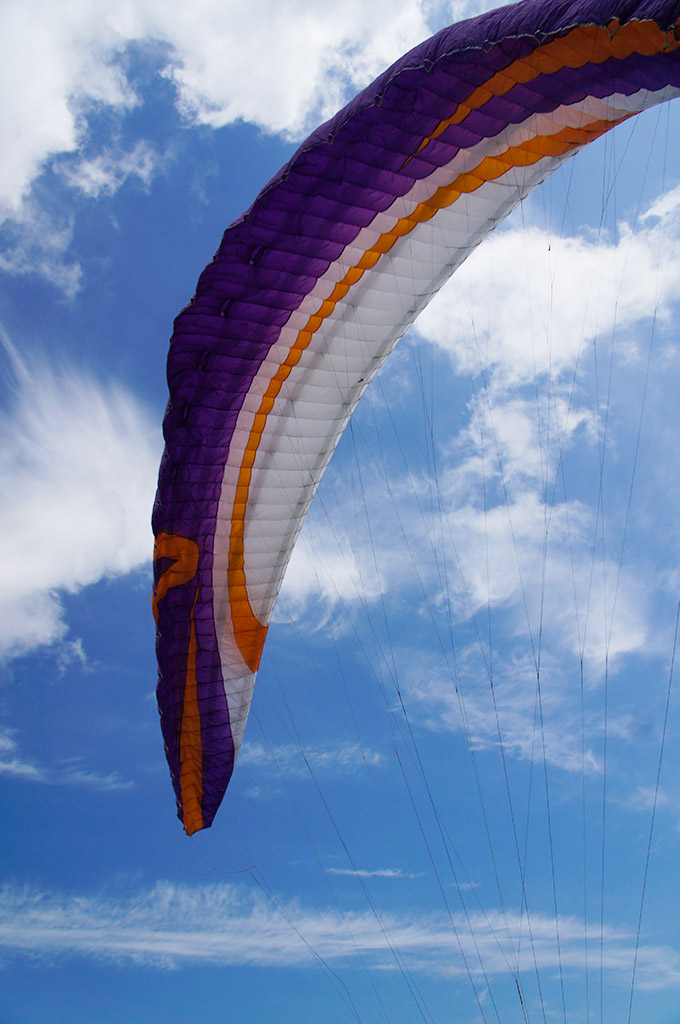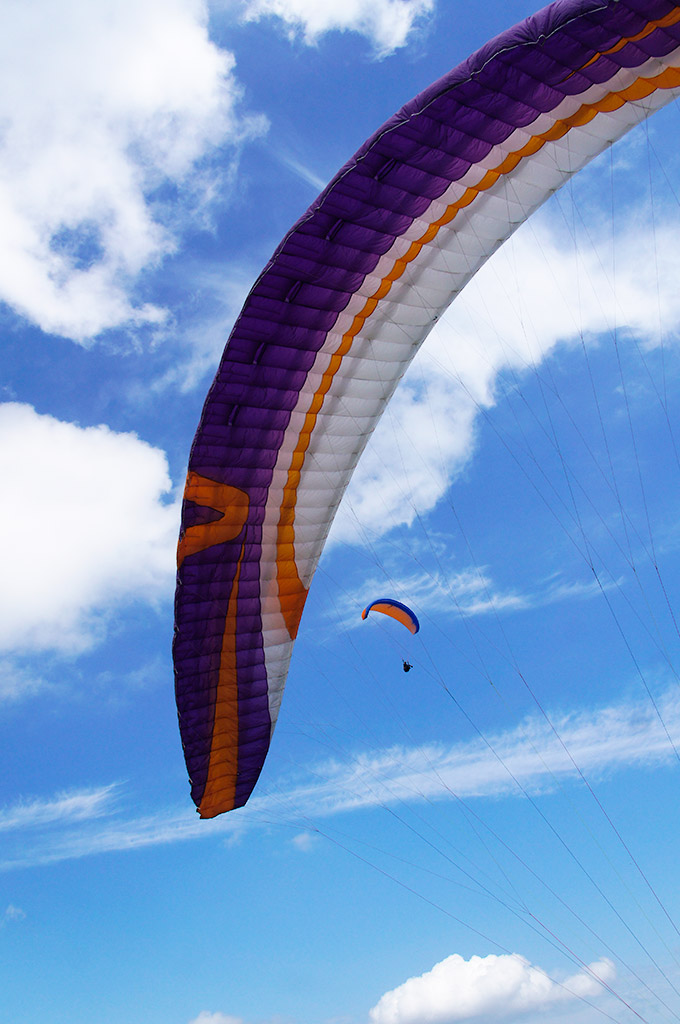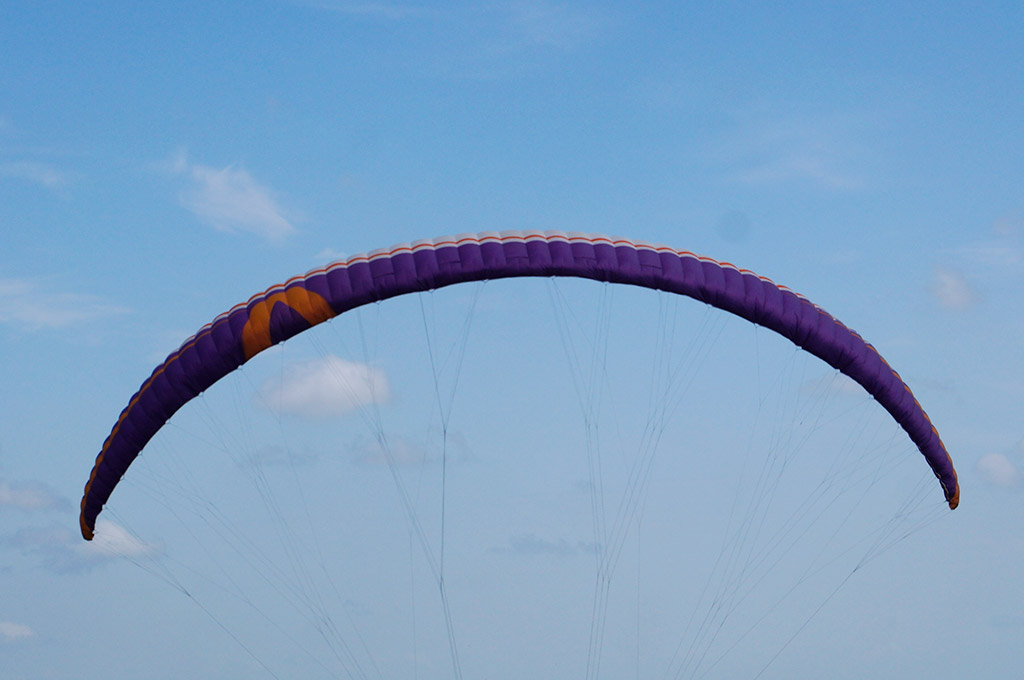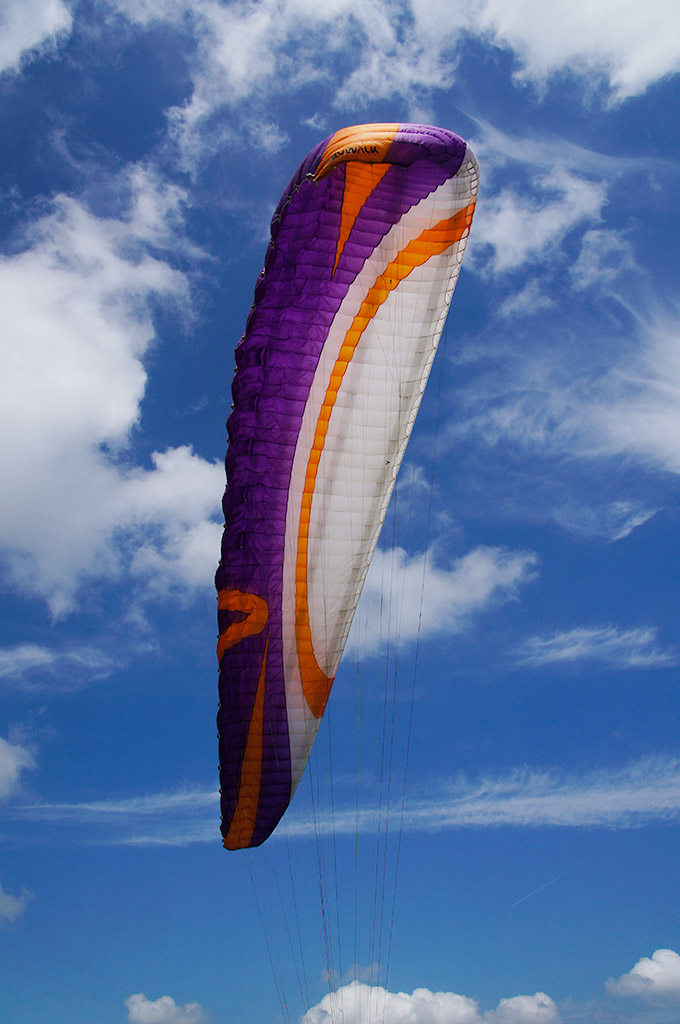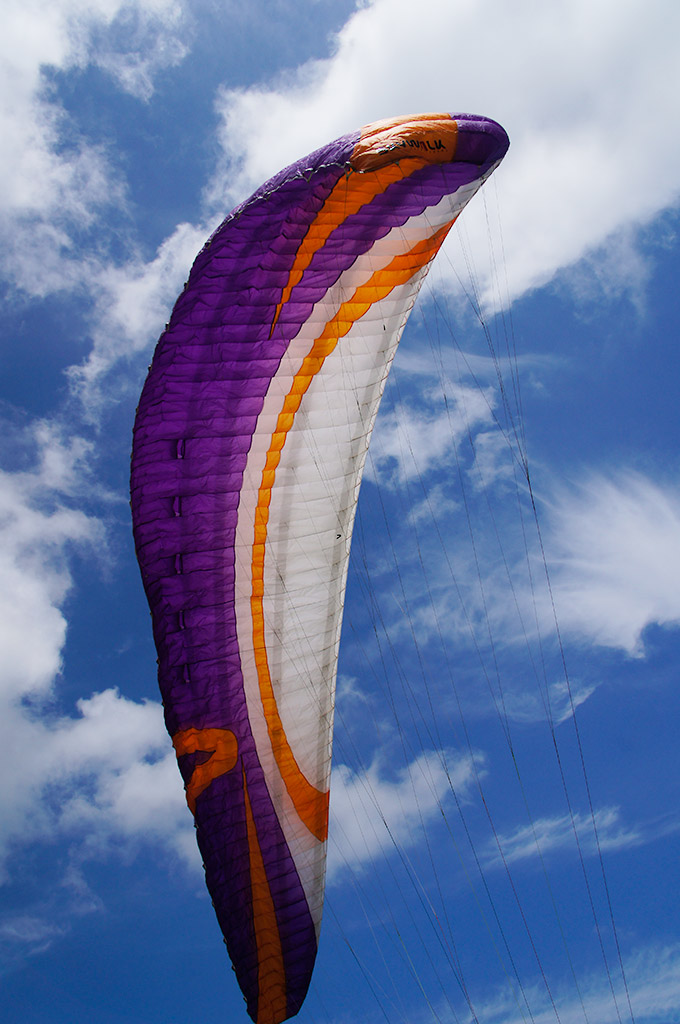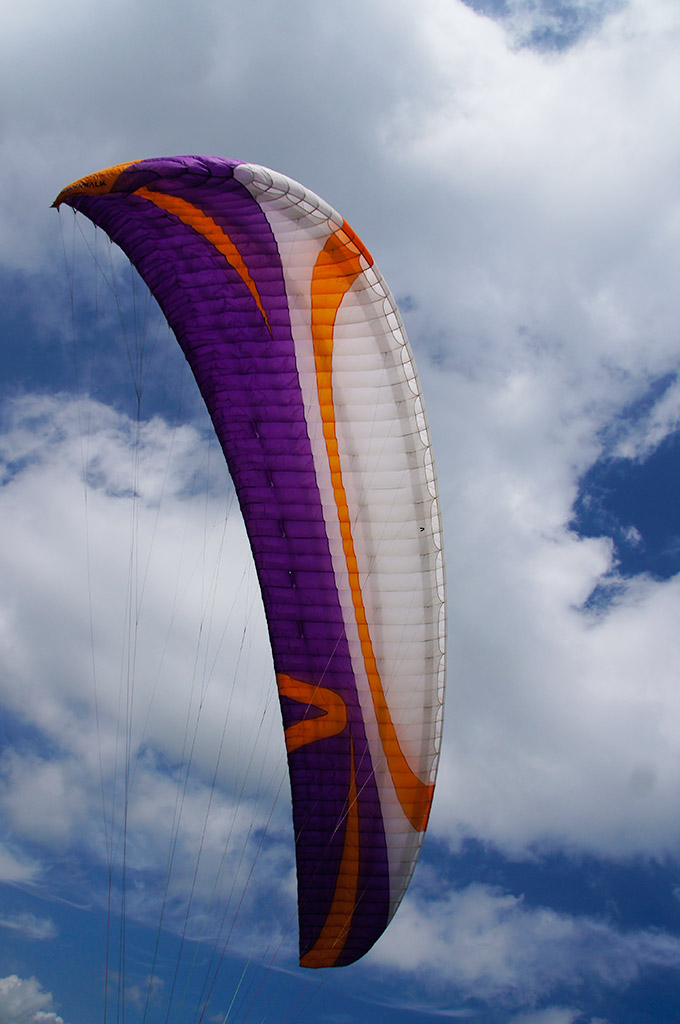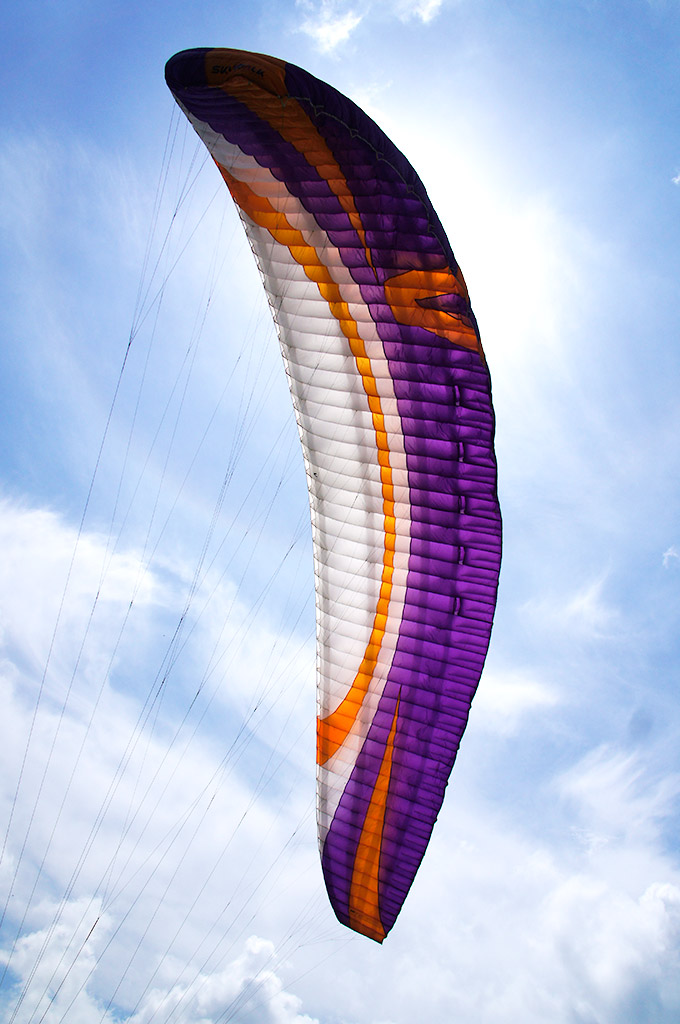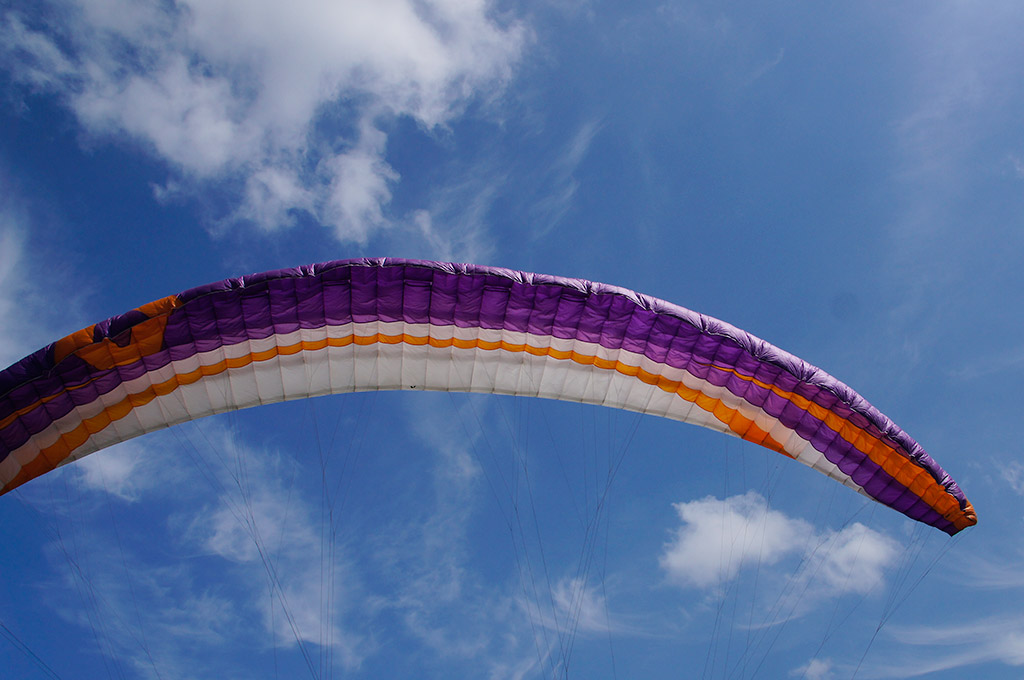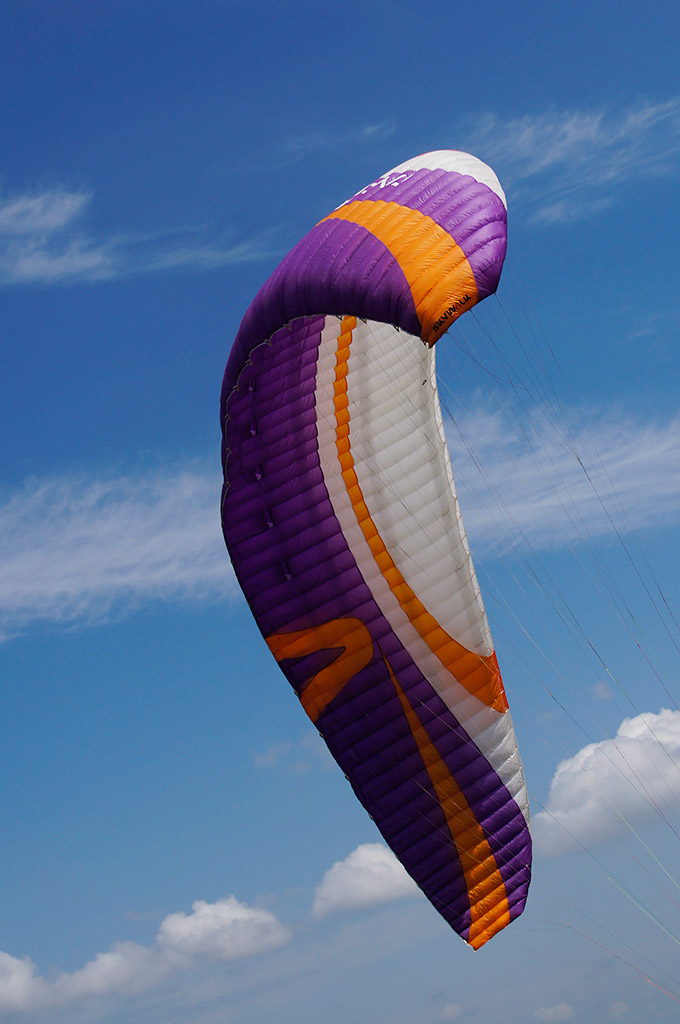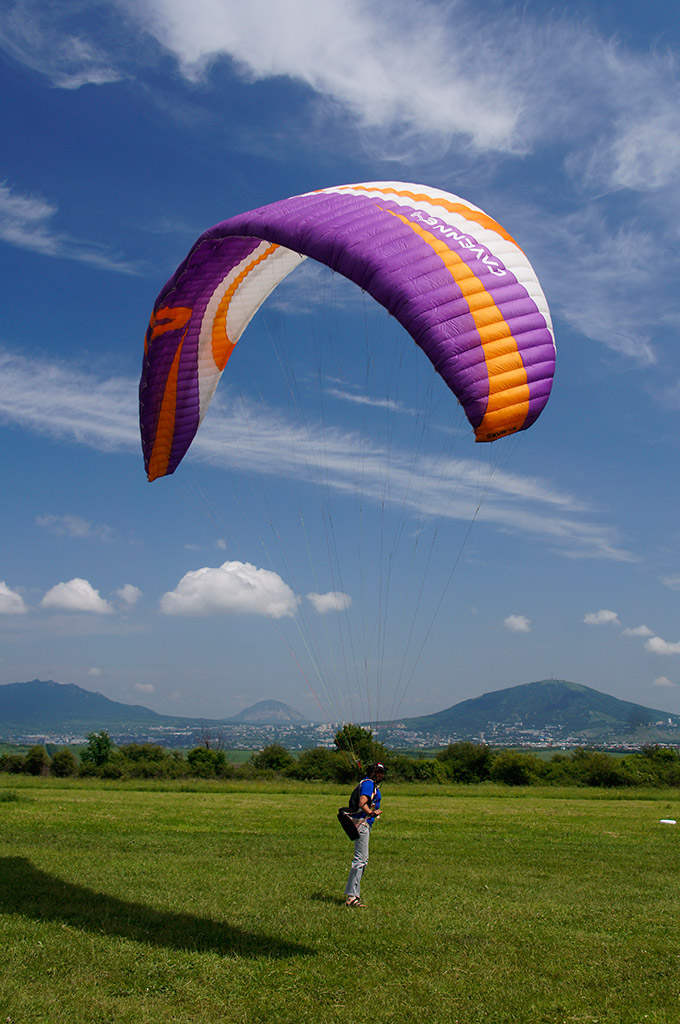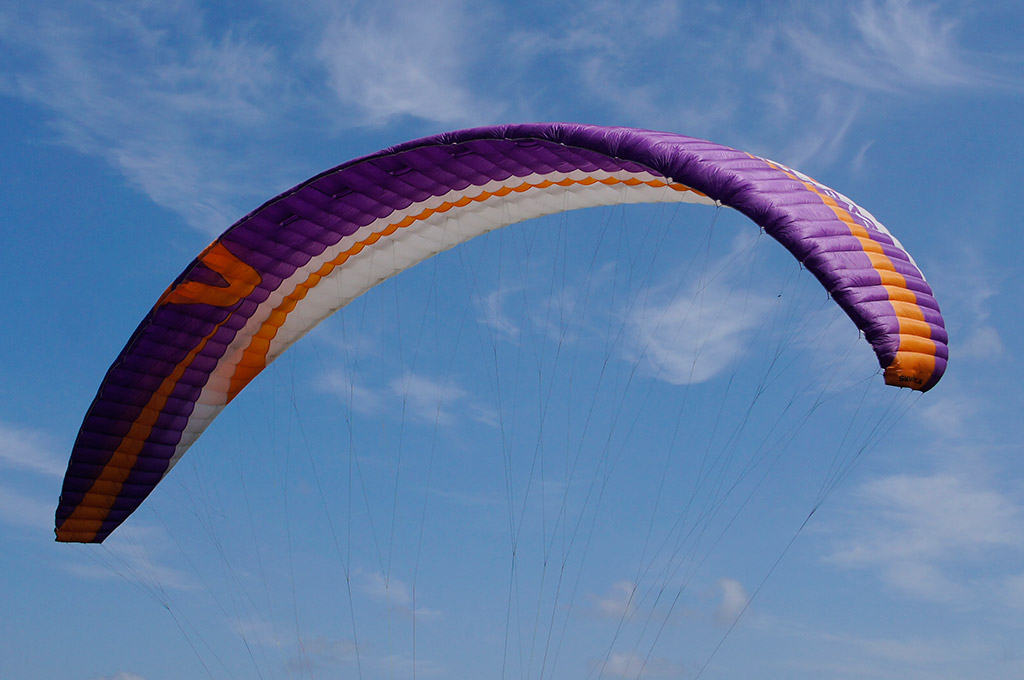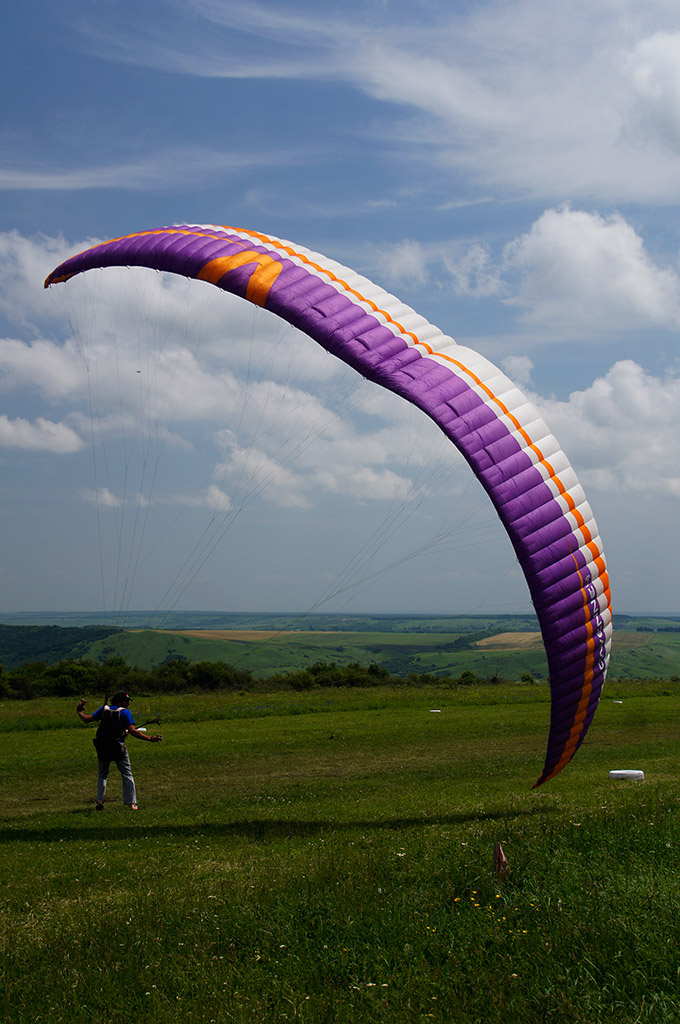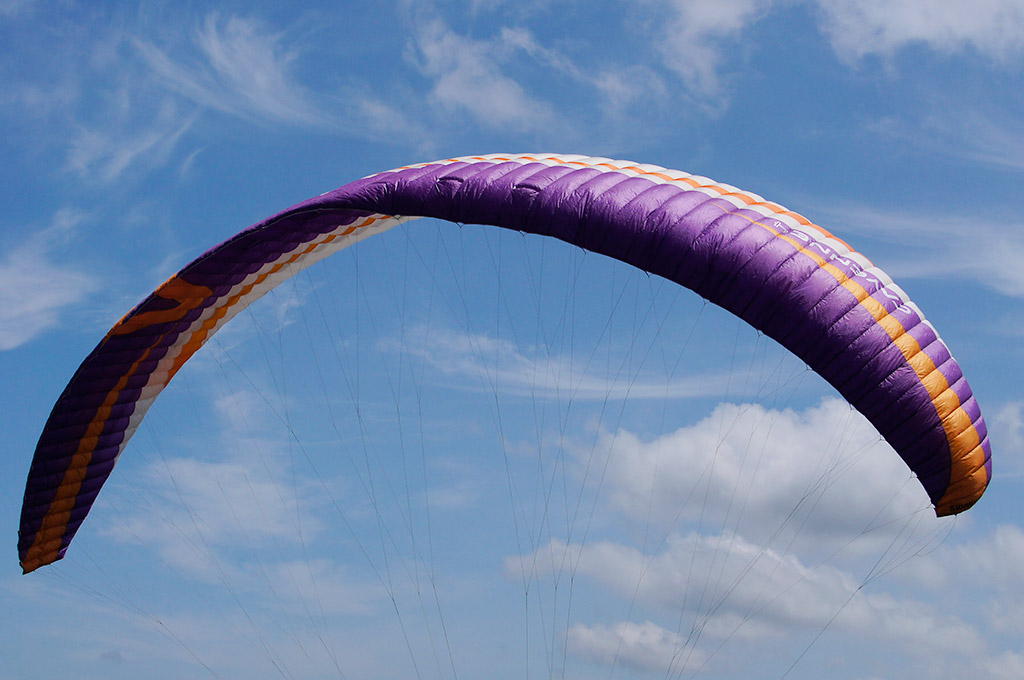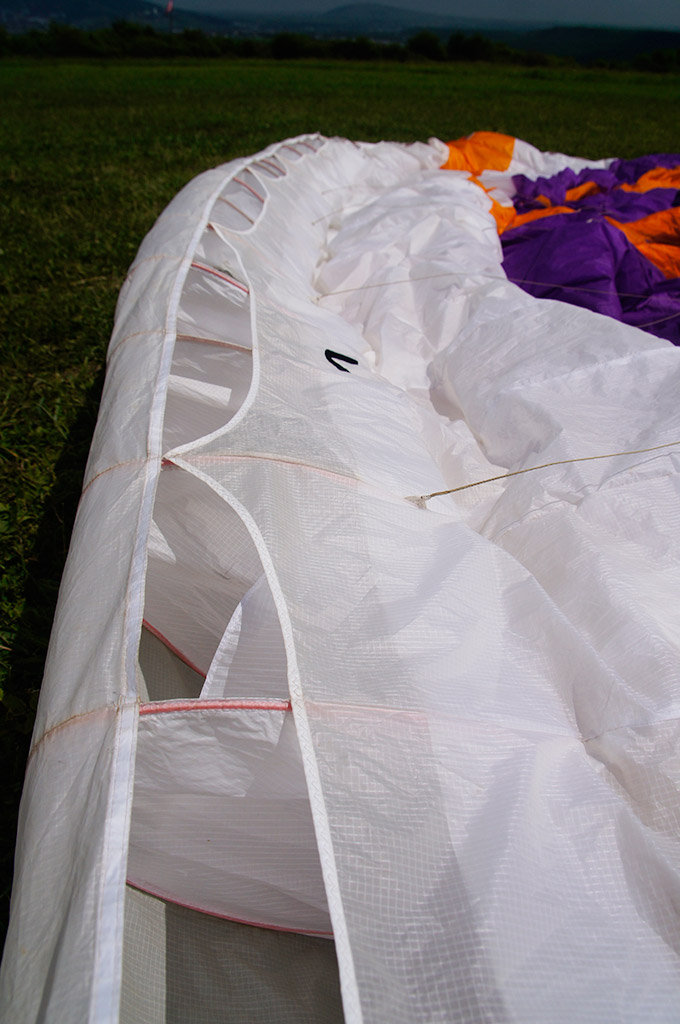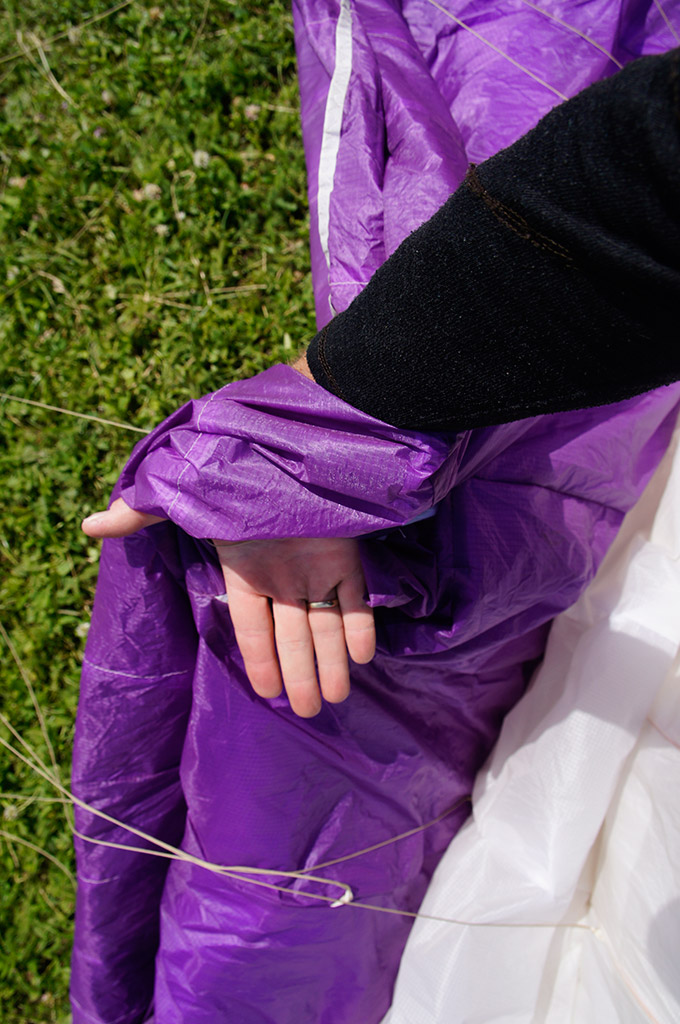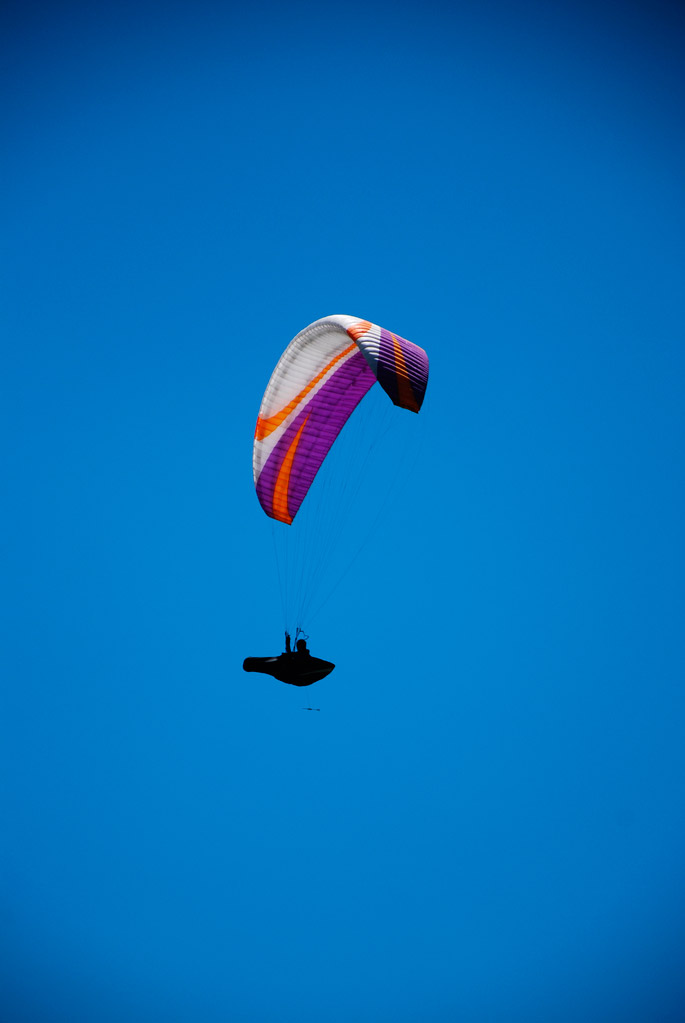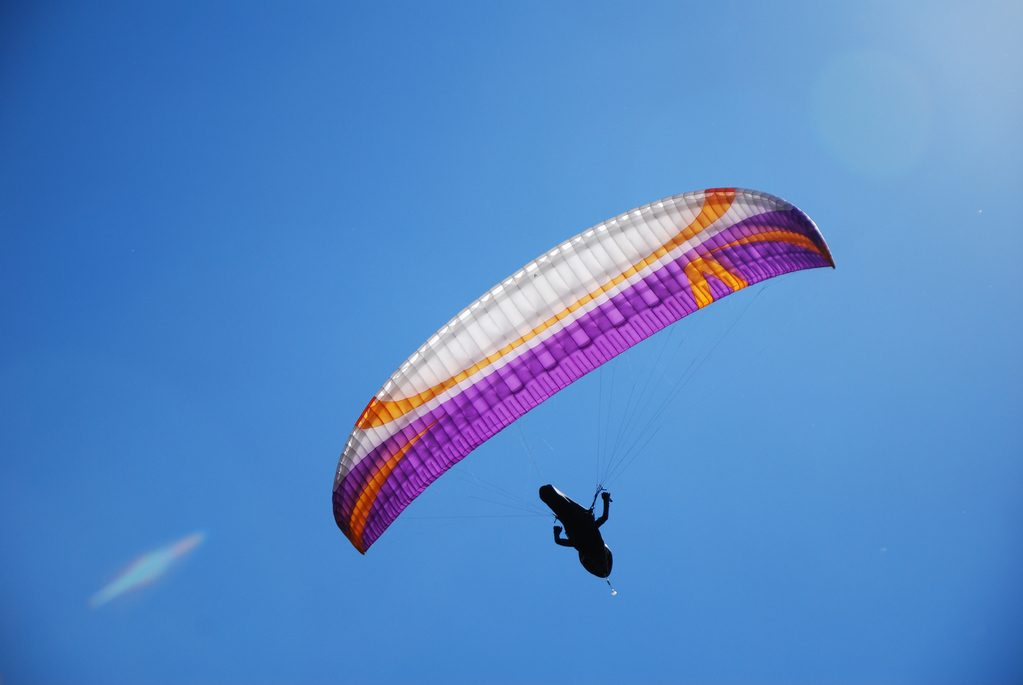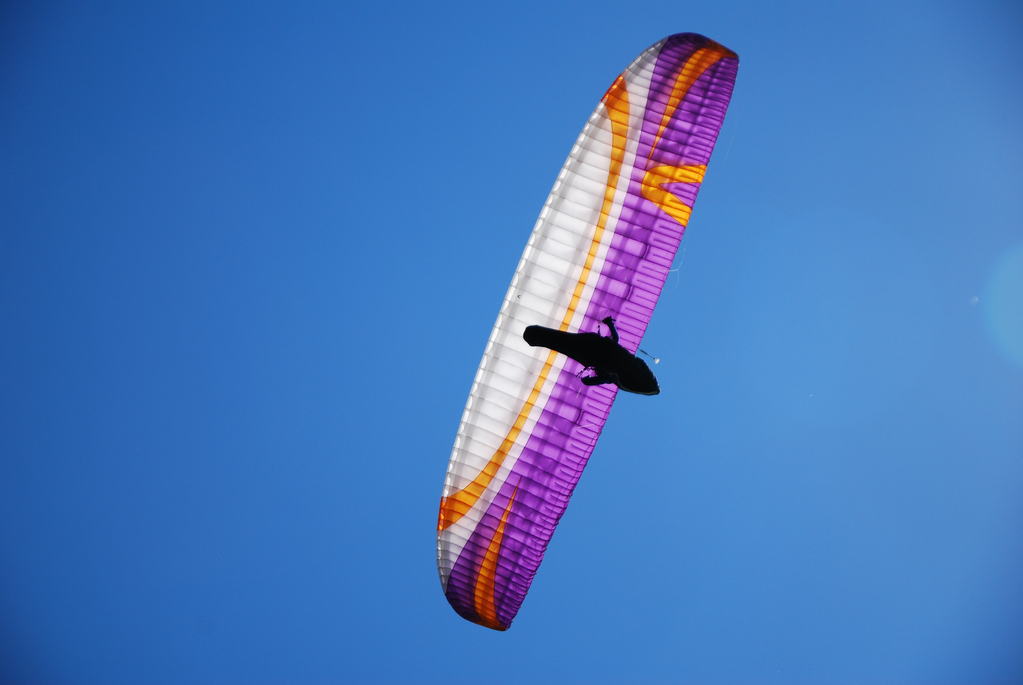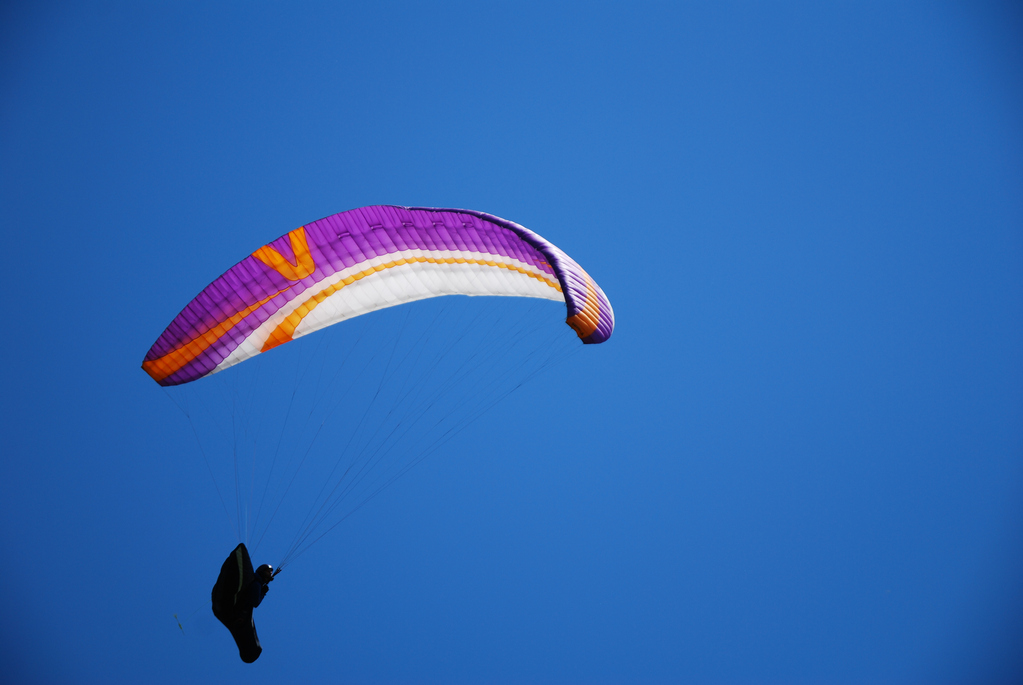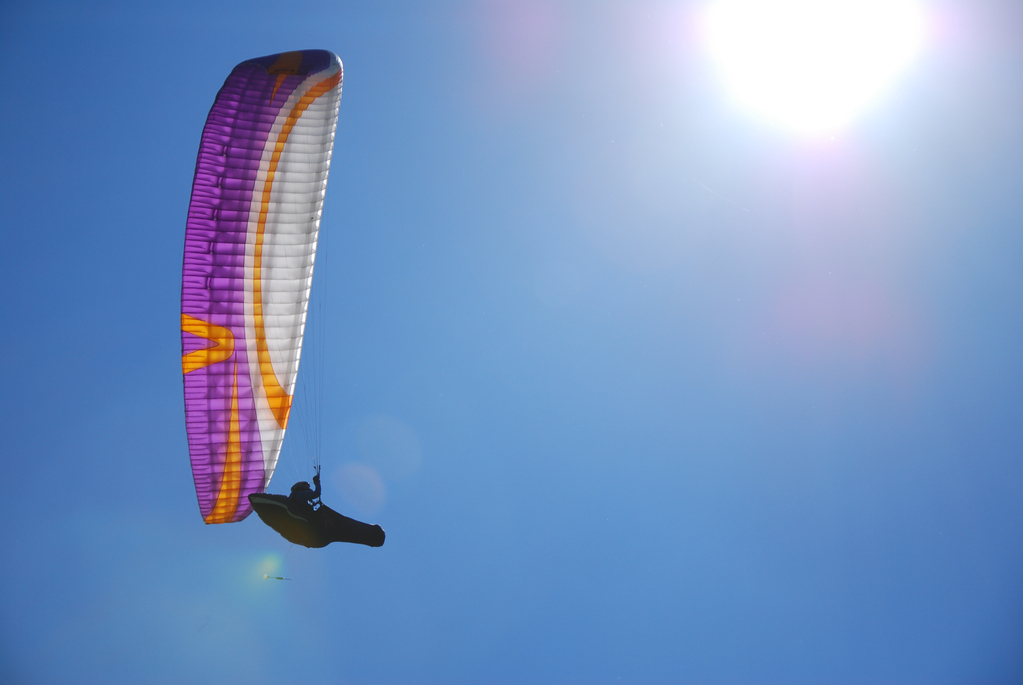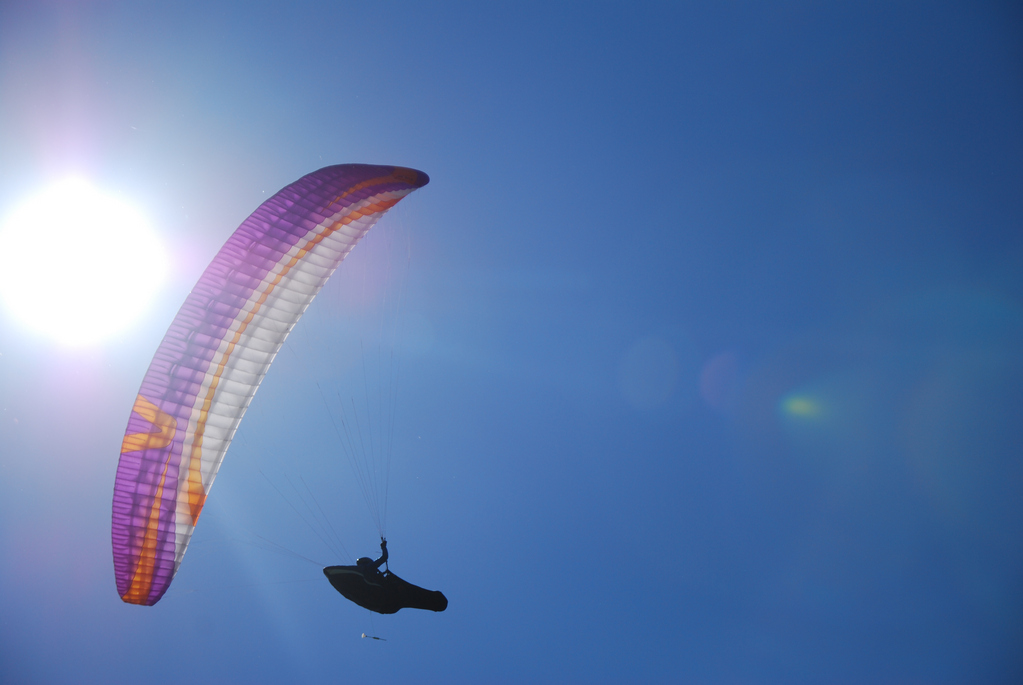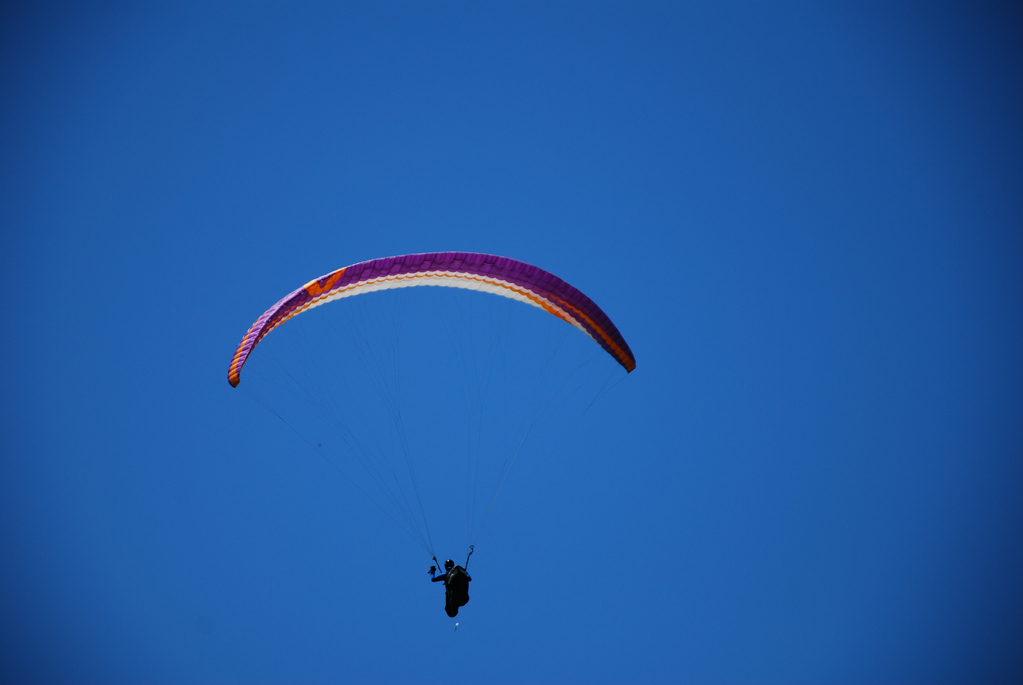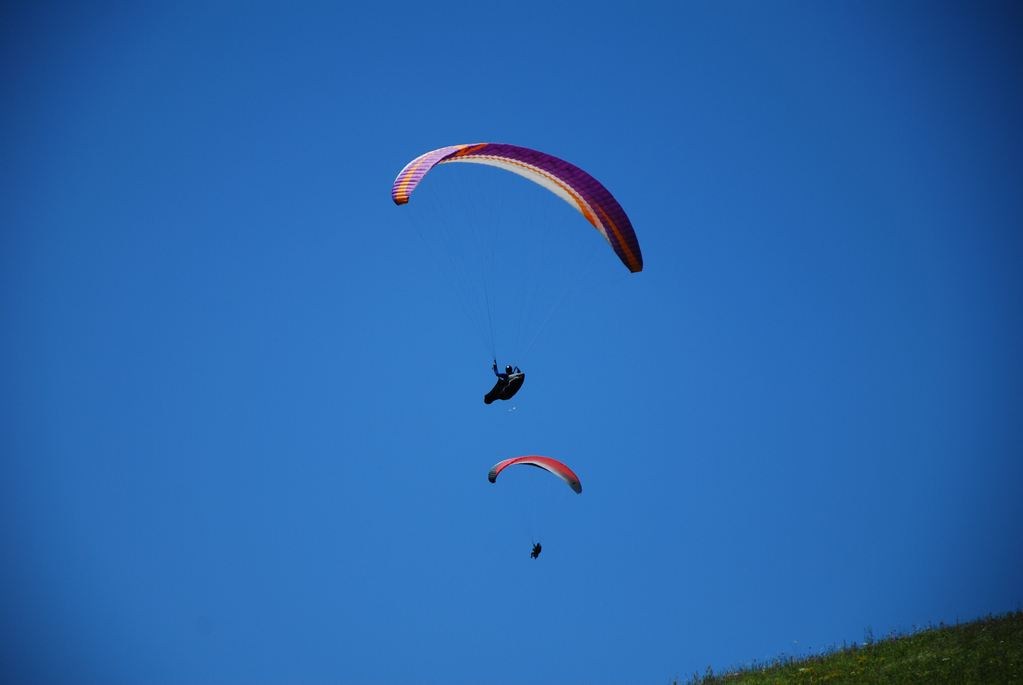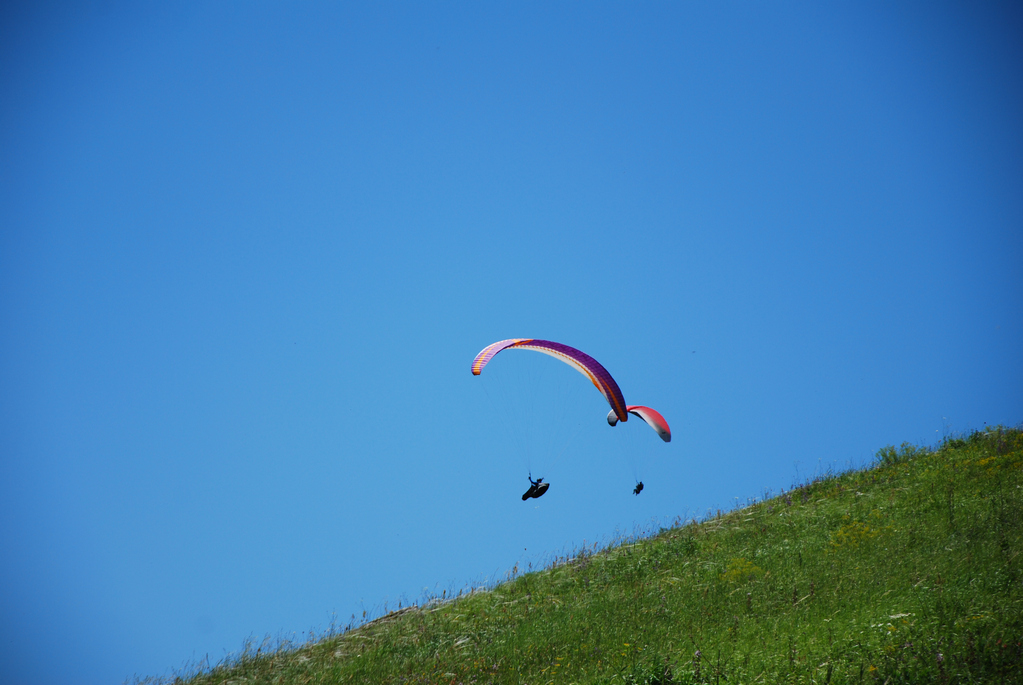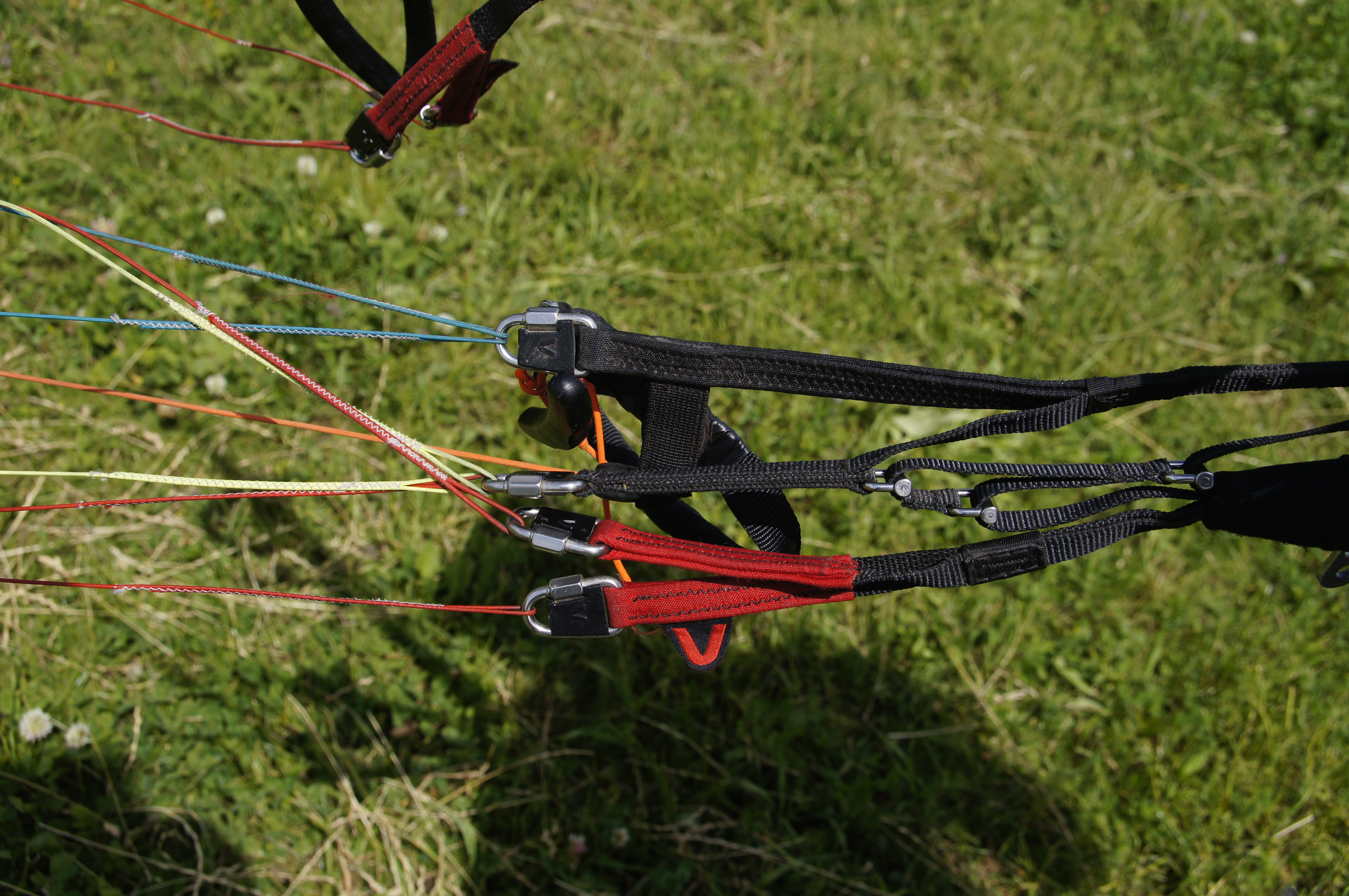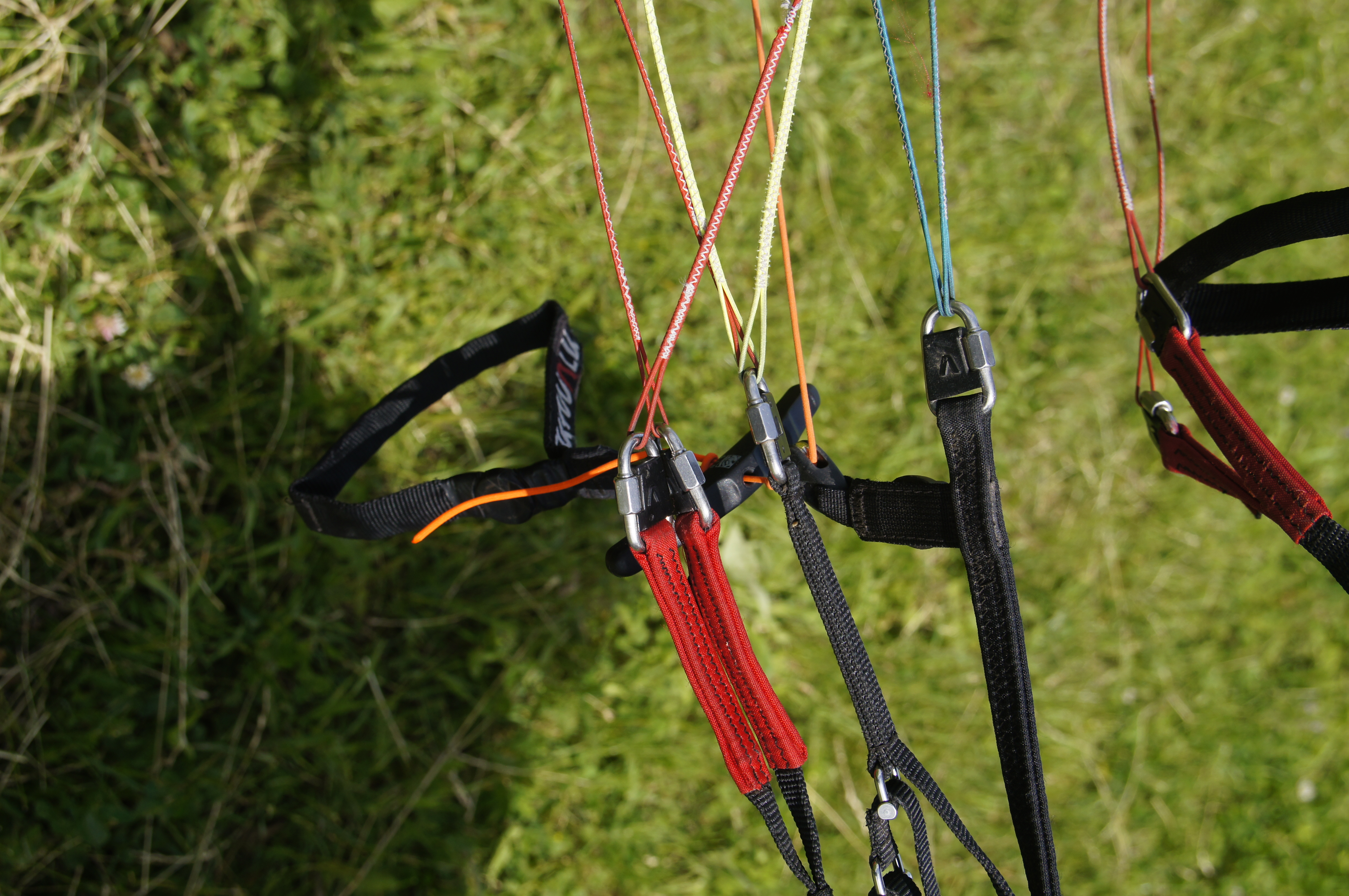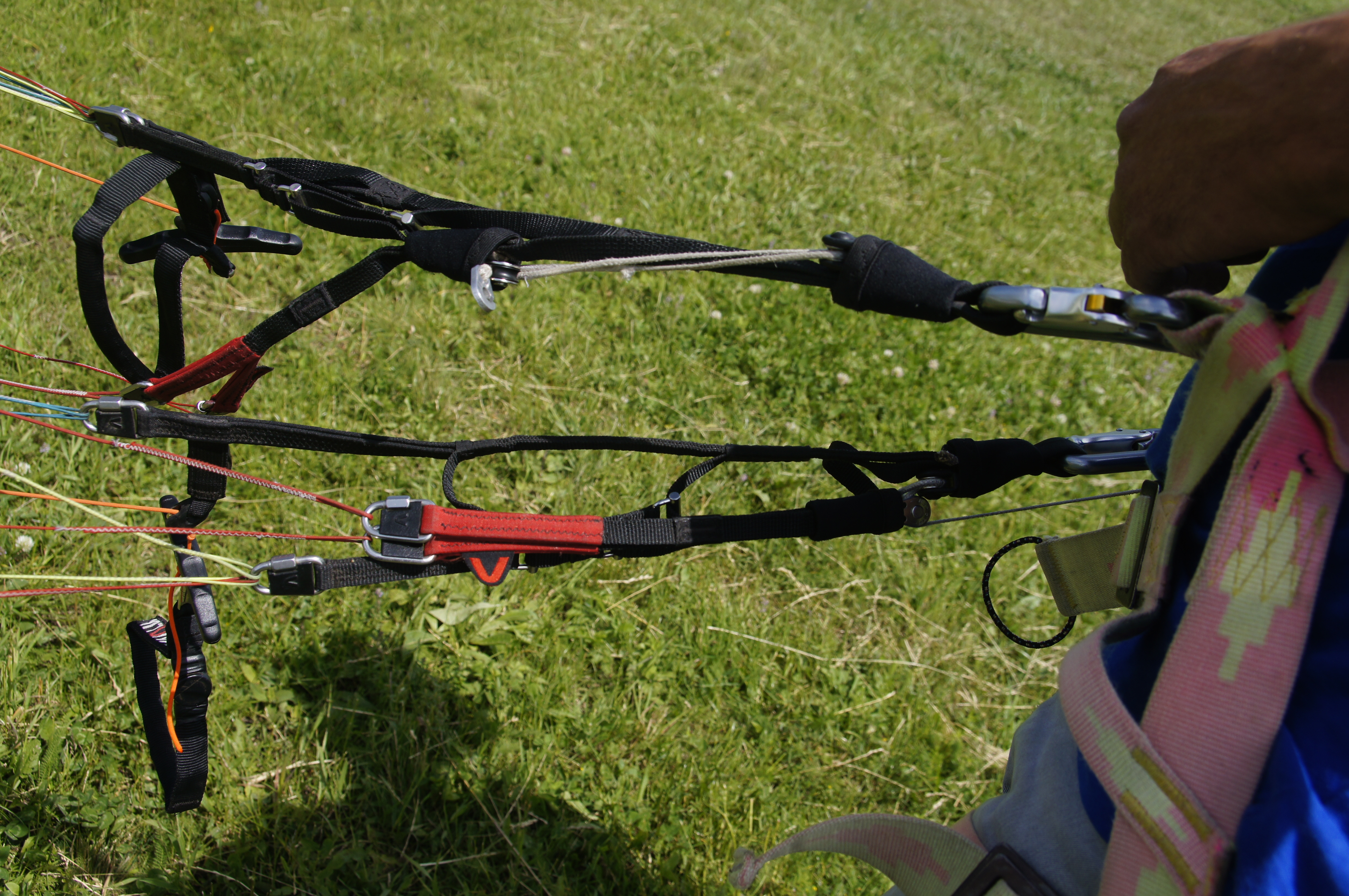Design
A normal, modern, respectable Euroglider with all the bells and whistles. But with its own face. There is something subtly kite like in Cayenne - it seems that it's the commonwealth with Flysurfer. The thing is in a little bit more contrast and intricate than it's used in paragliding, or in subtly original wing shape, or in branded quasi-flaps in the back part of the chord. Speaking of flaps. They are essentially profiled through-holes. The idea is generally sober, but due to the small extension of each hole (they are exactly one section wide and almost square) the efficiency of such a flap can not be very high. The shape of the wing... what can I say here, except "beautiful"? Well, it is beautiful, isn't it? The careful "polished", with predatory tapered "ears" of the wing hints at the sportiness and advanced shape. The loose ends are also sporty - narrow, quality sewn ribbon, a very modest even for a "performance" number of slings (A1A'1B3C2), and, of course, the "no-splicing" in the upper tiers. The elongation is far from a class record, but still a little over 6. Well, let's see what the subject is like in action...
Takeoff, wing work on the ground
The specifics of flying are that you either fly or you don't fly. An intermediate state in the form of ground handling is practically impossible here. Alas, I didn't get to feel the subject properly on the ground either. A short tug on the A-risers and the wing flies clear, fast, even with some intent to overtake, over my head. A split second to check the lines and the canopy, a U-turn, three steps of the run-up, a big final push with my foot and we are in the air. Maybe a little harsh for "performance", but everything is within the norm.
I managed to get my hands on the Cayenne only a couple of years later, in nearly ideal conditions of the June Yutza. And the Cayenne showed itself in all its glory. Accuracy and quickness of reactions, combined with an unexpected simplicity and even some readiness to forgive some mistakes of the pilot - you don't see that very often in an "advanced performance"! However, I don't exclude that two years of flying and the milder aerology of the foothills have softened the character of the subject a little.
Flight
There's something of the good Germans and Austrians in German and Austrian paragliders. During the week they sit in their right German offices and do their right German business, and by the weekend they get tired of their own righteousness and start to have a great time - but at the same time they remain quite respectable and law-abiding. This is how the Cayenne4 behaves. Yes, it is absolutely honest "performance" without insidious tricks and strange complexities in behavior - and at the same time some recklessness, not to say recklessness, all the time slips into the behavior of this machine. Edvans in paragliding circles like to compare with Mercedes, because it's respectable, comfortable and without fire. But I would compare the fourth Cayenne with the products of the notorious BMW. Yes, comfort, yes, respectability. However, at the same time, this machine has not enough fire, spirit, and character. It will not be boring! However, it will not be boring either - if the pilot is ready to pilot accurately, quickly and correctly.
Flying ability. Good in general! Certainly, it is not yet the level of class leaders like Trango XC2, but it is close to it. Cayenne4 is even better by the maximum speed - it overcomes Trango with one left. Light, but surprisingly effective gas pedal of Cayenne as invites to push it from the heart. The top speed of moderately loaded Cayenne4, according to my estimations, is not less than 54-55 km/h, that is quite decent result for today's performance class. But speed without quality is money for the wind. And everything is very well with quality of the Cayenne. Parallel flights on the balancing mode with the Mantra M4 showed the absence of any superiority in the Mantra. On the first stage of the gas pedal - practically nostril to nostril, too! Of course, the Mantra M4 takes off at the second gear, but it is a class above, it has to. Flights next to a fresh AirDesign Volt did not show notable advantage neither of the Volt, nor of the Cayenne. Parity! At least at speeds up to 50-52 km/h. It's a pity I didn't have the Trango XC2 at hand to check the conclusion made in absentia and the advantage of Cayenne in speed and to compare glides... Cayenne soars easily and effortlessly, there are no complaints about the rate of descent. However, the devices one or two classes higher school "guying" is determined not so much by the reduction as by the quality of the flight with a roll and maneuverability. So,
Controllability, maneuverability. The vogue for agility and responsiveness became firmly established in the performance class about a couple of years ago, and surprising me with a maneuverable, responsive "performance" has not been easy since then. But Cayenne the Fourth has succeeded, too. And the authors of this wing gracefully circumvented the problem of excessive acuteness of control, acute in the creation of such "hot" wings. The Cayenne's steering acuity increases smoothly as the arms go down. Behavior more characteristic of the schoolboy wing - and unexpectedly very appropriate in a case where a vigorous half-pass brake movement easily and uncomplicatedly sends the wing into an oblique loop... The Cayenne's atypical and peculiar (in the best sense of the word!) response to hand-holding creates a huge - and very tempting! - room for flight-pilot creativity. We gently work on the top quarter of the brake stroke with just a few fingers and get a little more lively than average, but very adequate, accurate, smooth and fast wing response. Slightly more vigorous hand movement in the first third of the stroke makes the Cayenne turn into the narrow mountain thermals with one powerful move. If you want to "burn to the limit", with a good feeling of the wing you can make the Cayenne turn into a oblique loop with one quick and accurate move of one hand at about half turn of the brake. Usually, "performers" demonstrate sharp or, conversely, soft steering responses across the full range of hand strokes - but this is clearly not the case with the Cayenne. By carefully savoring the variable sharpness of the Cayenne's responses, it is possible to subtly select the level of wing response that is needed right now in every minute of flight. Pilots sometimes unrealistically dream of changing the aircraft in flight according to the weather and flight objectives. The Cayenne is the first approximation to that dream. At least in terms of controllability. The capability of Cayenne to change the flight path more than covers everything you may need to fly in the thermals, it is good enough for all kinds of simple acrobatics like looping and probably covers even the requirements of typical acrobats. I don't know about acrobatics, though - it's not my thing. But for non-acrobatic flights the Cayenne is one of the market leaders in terms of maneuverability. In this case the plane does not keep the pilot in constant tension, familiar to those who are used to a sharp and simultaneously almost empty paddles of the First Factor, it does not require constant centimeter hand movements, like Up Summit XC2, and generally does not impose on the pilot any restrictions, except one. The most important one. It's a very, very nimble, docile and accurate machine. And, naturally, it does not tolerate rude, "after-school" mistakes in piloting.
Comfort, dynamics and information value. In this part of the test drive raptures die away a little, and features and strangeness begin. Personally it did not seem to me that the Cayenne is any difficult, abrupt or uncomfortable - more likely on the contrary. But it seems that the character of this machine strongly depends on loading, and it's better to load the Cayenne from the heart - not below the top half of the fork. Judging by the experience of a lighter pilot who tried the same Cayenne, loading close to the bottom of the fork makes this machine very prone to folding. And you have to hold the machine with surprisingly deep and fast braking motions. However, this is not my personal experience, I have not encountered anything like this myself. Loaded above the middle of the fork the Cayenne is pleasantly lively and dynamic, but no more than that. I liked that with this loading there is almost no extra wing movement. The Cayenne doesn't flutter or wobble when it is spinning, but it sends the pilot the information he needs to hover and control the wing by filtering out the extra kicks and jerks of turbulent air. Most of this information is transmitted through pitch and airspeed variations, and to a somewhat lesser extent - through the swats. In general, the information capacity is a little higher than the class average, but not so much that it is uncomfortable. Shocks of bumping Cayenne meets elastically, softly "swallowing" and dissipating received energy. Fortitude to folding at the increased specific loading does not cause censures - "fighting" folding in such configuration could not be received even once, and the behavior of the apparatus is perceived as comfortable. Dynamics in Cayenne also fits into the concept of "above average" - the unit powerfully stores and just as powerfully gives back the accumulated energy, requiring a clear control of speed on the maneuvers like vingovers. The already mentioned Trango XC2, of course, stores and recovers more - but it is almost a high-perf. And the behavior of the Cayenne fits convincingly into the paradigm of the performance class.
Dangerous flight modes
Asymmetric folding
Great! Yes, that's right, with an exclamation point. The behavior of a very, very well loaded Cayenne at 50-60% "asymmetry" would be appropriate even for "intermediates". Problems with sharpness and unpredictability of the mode, so typical for devices with lines in the leading edge, are completely absent here. There is a soft, smooth, gradual opening from the center wing to the "ear" (which "ear", by the way, does not tend to "stick" at all). All movements of the Cayenne during the opening dynamic is exactly as far as it is appropriate for "performance", but the rolls-turns and loss of height obtained by some not serious: oblique roll no more than 40 degrees, pitch deflection - less than 90 degrees, the loss of height - about 15-20 meters.
Frontal fold
Perfect. Similar to the "asymmetry": the same powerful dynamics of movement with the expressed loss of speed in the initial phase of folding, the same fast but smooth release without the unpredictable jerks and rolls.
Thermal Spiral Breakout
We've had it! It is with great pleasure that I write the phrase "mode is difficult to trigger." So hard, in fact, that not every pilot can do it. There are two reasons for that: the strain on the arms, which increases very quickly as you lower the arms down, and the sharpness of the control, which increases even faster when you lower the arms down. In several attempts to provoke an underrun, the Cayenne went into a steep spiral or increased the load on the arms to quite inhumane values, but it did not want to do what I wanted it to do. "School-boy" behavior!
Conclusions
The Cayenne is a very interesting "performance": moderately "hot", perfectly flying, but at the same time not falling out of the limits of its class in an obvious way. The strengths of this "hot pepper" - an excellent gas pedal, which accelerates the wing to a quite decent 54-55 km / h with a very small loss of quality, and excellent handling, which practically deprives the Cayenne competitors by this criterion. The flip side of the pepper - the need to load the machine above the middle of the fork (otherwise there may be some increased "folding") and the minimum required flight time of about 100 hours. Cayenne is versatile and multi-faceted enough to bring joy to its owners on the plain, and in the mountains, and on long routes, and in waggas-sessions in the dynamics near the slope. If the listed pluses are not enough, the Cayenne has one more trump up its sleeve: the original appearance. Of the competitors I can probably name the Summit XC2 (handles comparably, but loses in speed), the AirDesign Volt (close in volatility, but far behind in maneuverability), and probably the Nova Factor2. In any case, the Cayenne4 is a success for Skywok in particular, and for the performance market in general.
Pros
- Excellent handling
- High LTX (especially the combination of speed and quality on the right side of the polar)
- Original appearance
Cons
- Not found
Features
- Moderate to low folding resistance and specific behavior near folding at low specific load
I express my gratitude to S.Shelenkov for providing the unit for tests.
Photo: I. Tarasova, A. Tarasov

